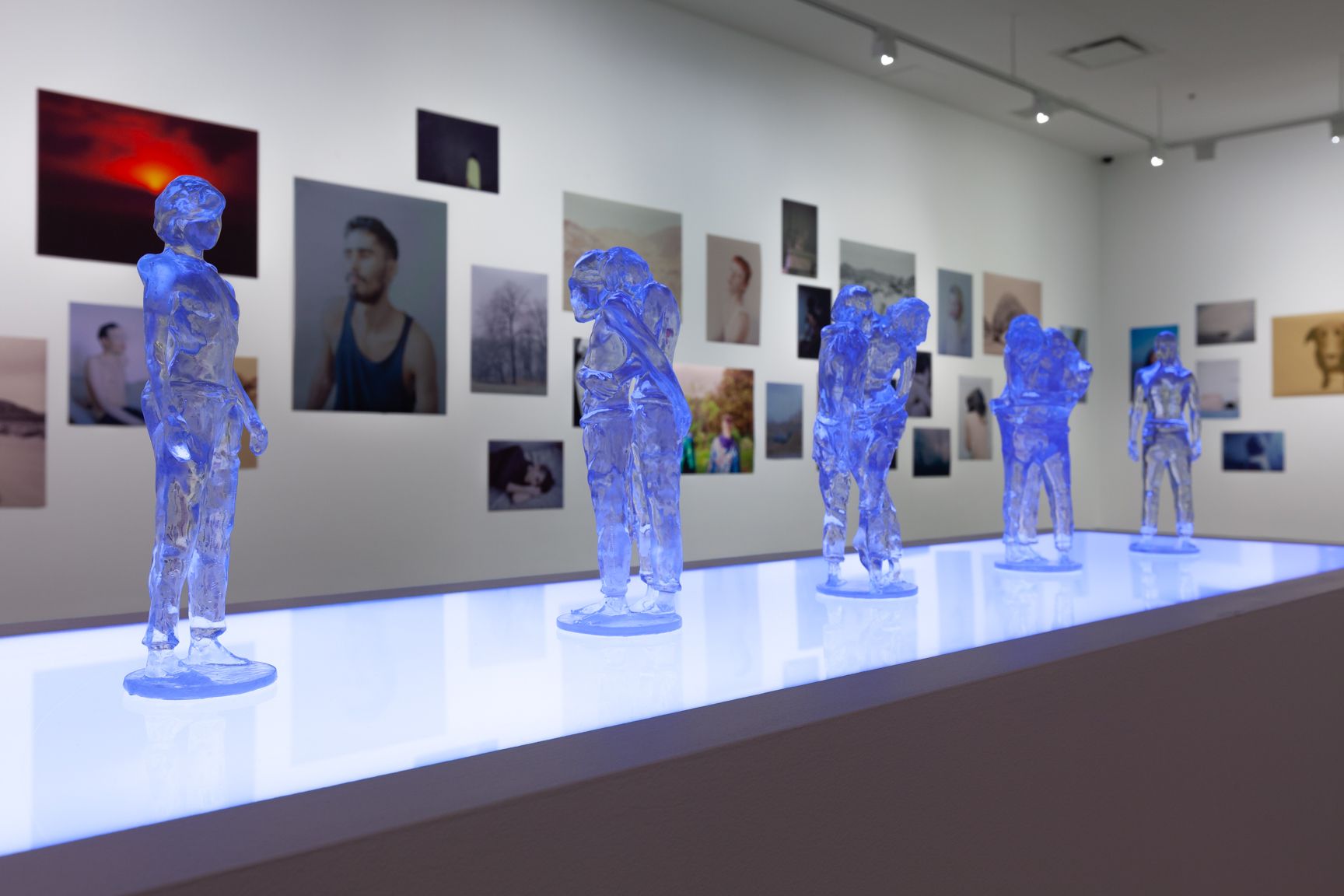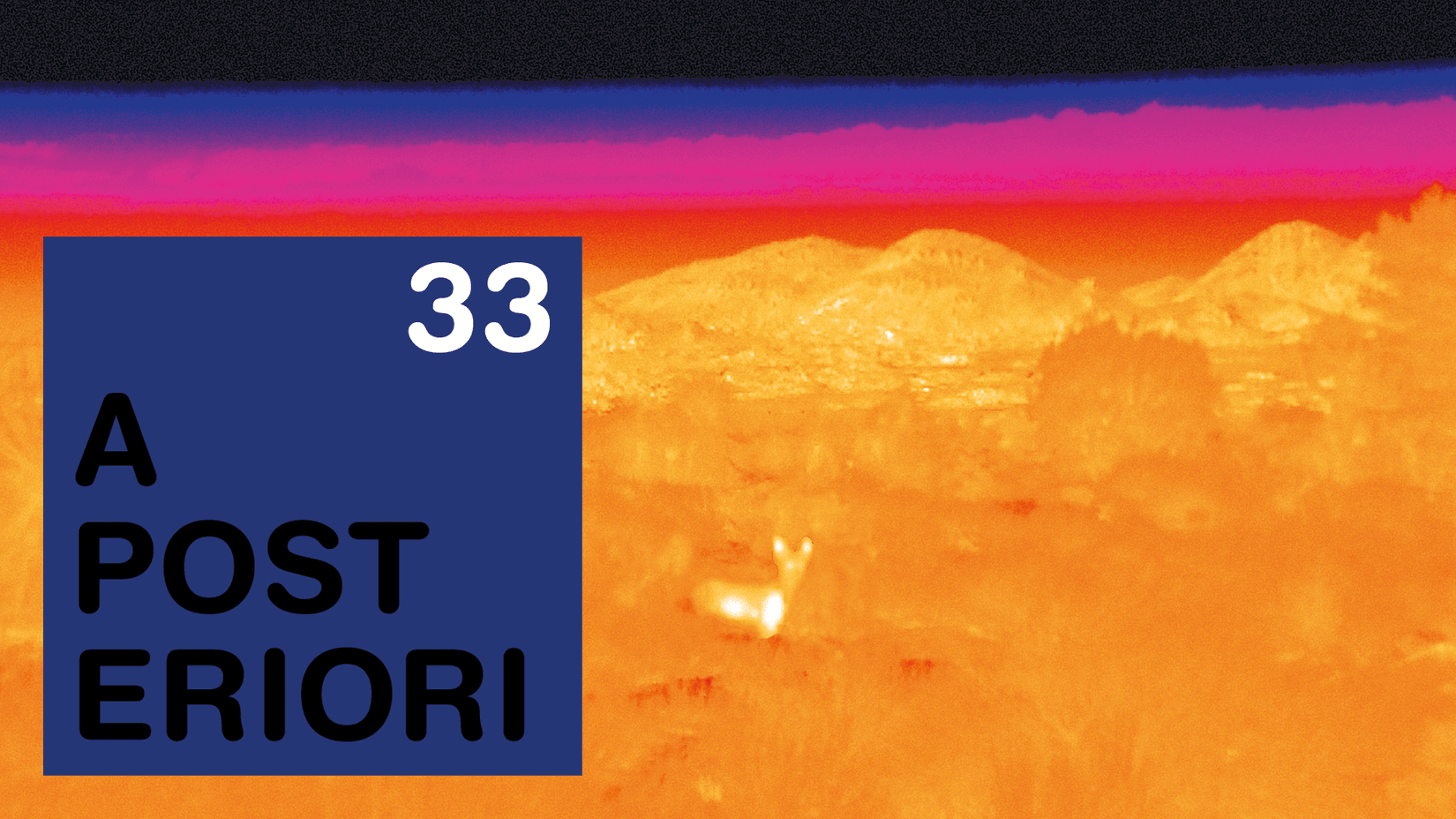
SMITH
Outer
2023.11.23 - 2024.02.03
- Notes
Opening reception
Thursday November 23 at 5 p.m.Radio Spirale x USINE C : Identités en mutation (in French)
Monday November 20 at 7 p.m. at USINE CSymposium : Queeriser, dit-on? Questionnements sur les apports des perspectives queers en recherche et en création (in French)
From Monday November 20 to Friday 24 at UQAM
Tell me how you tell it; I’ll tell you what it is that you’re building. – Isabelle Stengers1
THÉRÈSE ST-GELAIS
With SMITH, assignment and stability have no place. The artist entrusts to fabulation the requisite latitude to invent narratives and propose mutations that destabilize our way of thinking by teleporting it to new imaginaries.
It is difficult to put into words the undecidable aspects of identity, but also the performance of an “outer-gender” that distances itself from conformity. In SMITH, intelligibility now lies in the porosity of boundaries and a perpetual transition, as Paul B. Preciado has called for.
In SMITH, at the same time as we experience the thickness of materials and the transparency of bodies captured by thermal cameras, we witness a disengagement from binarized realities. In this realm, as related by the likes of Vinciane Despret or Donna Haraway, the invisible slips into the spectrum of the visible: living beings and ghosts, humans and non-humans share a common reality in which care and curiosity are expressed through unexpected kinships–thus a meteorite fragment and a silicon chip capturing ghosts are implanted in the flesh of the artist, whose practising of non-ordinary states of consciousness affords him access to another mode of relations and hybridization with his surroundings.
Amid the multiplicity of types of knowledge that intertwine beyond the limits of their disciplines, to which reality do we wish to belong, without disavowing a constantly renewed openness to difference? Might fiction prove to be closer to what we expect and want from reality? How does resistance to assignment of gender, of norms, influence shared wellness and shared existence? Beyond humans and their dependency on types of knowledge that normalize, perhaps there are gateways leading to a regeneration of wisdom that is more unifying.

Conversation between SMITH and Thérèse St-Gelais
THÉRÈSE ST-GELAIS: There is always this luminous traversing through living things, human, animal, plant. . .
SMITH: There are, in the images shown here, images of a life entire, which bear the marks of evolutions, sheddings, bifurcations. What you describe as a luminous traversing is a path that is punctuated by multiple steps, encounters and realizations. It is a quest for a kind of essence, an absolute of light.
In the earliest stages of my imagemaking practice, I would photograph everything I observed: my relatives, the places I passed through, animals I encountered, trees I admired, journeys through the windows of trains I rode on. My parents, who were photographers, taught me that “photography” literally means writing with light.
To me photography is like a silent language. As I went along, I realized that there was no fundamental difference between taking a portrait of a dear friend falling asleep in the morning after a night partying, of a tiny orchid mantis seeming to dance in the hollow of your hand, of a tree twisting in the wind, its stubborn roots clinging to the sand with hope, or of a star vanishing into the folds of a forest. The gaze is always the same.
T. S-G.: There is no longer any frontier, or edge. We are facing the infinite.
S: In my skin, in my life, I have often felt on the outside of these frontiers. Male/Female, Human/Non-human, Visible/Invisible, Living/Non-living, Real/Fictional, Awake/Asleep. . . Of one side, and the other; neither on one side nor the other. Between the two. Outside the two. Outer. Simply.
For a long time, I sought to convey that strange feeling of being precisely there, that is, nowhere: at the threshold, on the frontier. That feeling of staying immobile as I face the imminence of a tipping point that doesn’t come, tightrope-walking, at the very edge of the precipice. This is conveyed in my images, which ask only unresolved questions: What am I seeing in this photo? Is it a man, a woman? Is he sleeping, is she awake? How old is he, is she? Since when?
T. S-G.: A body is present but with no identity, disembodied, spectral. What is it trying to tell us?
S: The photographs have no titles. Neither the bodies nor the places in them are named; they are dated solely for archiving purposes. These images are not guided by true identity, determined by administration, by age, background, personal history or the singularities of the people photographed. Rather, their guide is the continuity of the affection, sometimes the love, I feel for these beings that is manifested in the flow of bodies of all sorts, which seem to be born on one image and continue on the next, in another form.
These photographs are rarely staged; they are selected within a flux of photographs in which, little by little, a vision has composed itself: that of the potential, through the very matter of the image, its grain, its impossible sharpnesses, its smokescreens, its washes of colour, to recount an encounter between differants, to compose a love song to a metamorphic, starry form of life. A form of life that lies “between”, with such fervour that the frontier fritters away under its weight, revealing continuities, spectres, flows, rather than categories.
T. S-G.: Only organicity, transitivity. Only transitory states. No assignment.
S: Exactly; it’s important to me to disengage the body from its assignments and the systems of domination in which it is enmeshed. This is done by composing, with images, an other-body, a hybrid body, a body made into a thousand bodies, a body coruscating toward an infinity of other bodies, other possibilities, other warmths, other lives.
From an initial creative impetus that was about being in a suspended moment, I shifted to a second phase where I’ve taken that intuition further.
That manifested through my encounters with techniques and technologies that made me feel that I was accessing a larger world, a broader reality. This began with my discovery of the thermal camera. This photographic device, created by and for the U.S. military after the Second World War, affords our human eyes a new type of vision, what we call “the invisible”, but one that other eyes—those of snakes, for example—do have access to. There is another of our senses that can detect that realm of invisibility: touch. What we perceive as heat is really a part of the visible spectrum, but one too extreme for us to detect with our eyes. This camera allows me to access what I call ghosts: traces left by bodies that were there, a moment ago, or a thousand years ago, and whose thermal energy endures.
T. S-G.: These people in trance-like stages, with acute sleepiness... where do they come from and where do they want to go?
S: I discovered non-ordinary states of consciousness through the practice of transcendental meditation, self-induced cognitive trance, and Amazon medicine in the Peruvian jungle.
I also explore suspended, transitive body states, made possible by advances in biotechnology.
First, with hormone treatments that are used for gender transition, which offer the body a new kind of shedding, a slow passage from one world to the next.
Next, by exploring parabolic flight: I went on a plane that follows a parabolic flight path over the ocean, alternating between ascents and descents to recreate a state of weightlessness for passengers, 22 seconds at a time. During those 22 seconds, repeated dozens of times, our body is no longer subject to the assignment of terrestrial gravity: we float, like astronauts do, not feeling the weight of our body.
And then, again, using the vision of the invisible provided by the thermal camera.
Thanks to these technologies, both ancient and ultramodern, things and beings reveal themselves in a space of infinite potentialities: we live and dream along a vast spectrum, the poles of which are unreachable and extend in all directions.
A tentacular, Chthulucenic spectrum, with multiple poles, make possible a position that challenges compartmentalizations, fossilizations, discriminations, dominations of one pole over the other. A spectrum where multipolarity replaces bipolarity, where the “between” replaces the “in between”. An outerness, coruscating toward multiple beyonds.
T. S-G.: Why this constant need to see inside, to see through—with transparency?
S: In transverse and transparency, you already have “trans”, a Latin prefix that gives the sense of moving from here to there, passing through, going beyond.
Like a traversal that is itself a vessel, like Spaceship Earth, that we live on and that is our vehicle in the expanding Universe. To live in what is trans-ing, what is outer-ing, to see through, is to make your own the indefinite status of that which lies “between”. It is to let yourself traverse. To become that which trances, that which ghosts, that which haunts, that which traverses, that which is shakes, that which mutates, that which is shed in us.
The use of transparency in my images, videos and sculptures is an invitation to that great shedding, that great striptease that reveals a superluminous body, traversed by a thousand fluxes.
T. S-G.: Reality, or a fabrication?
S: It’s up to us to invent the world that we would like to see happen. The key to this is in our practices in life, but also the culture of our imagination. As a child, I would watch the 1984 Wolfgang Petersen film The NeverEnding Story repetitively. One morning, a lonely little boy, probably autistic like me and constantly submerged in an inner world of dreams, fictions, misunderstood relationships with non-human creatures whether real or imaginary, hides in a bookstore from bullying classmates who are chasing him. He has a chance encounter with a book, The Neverending Story, of which he becomes the protagonist as he reads more and more of it, and comes to realize that his role is to keep on dreaming so as to sustain another world, which is called Fantasia.
Fantasia is the world of fantasy and the human imagination, and as our dreams die, our nights die and the stars disappear, as humans maintain a toxic grasp on the rest of the world, as the Other is systematically disempowered on Earth and in the cosmos, this world is dying. The same is true beyond the fiction.
We’re destroying our world. Our world is burning.
My images are in invitation to infinite desire, to respect for the Other (human, non-human, cosmic...) in its opacity, to the development of relations, affections, hybridizations, transitivity, traversals. They invite us to engage in critical discourses, artistic practices, in a continuum of thought, knowledges and creations. They invite us, I hope, to compose new mythologies.
Listen to the conversation between SMITH and Thérèse St-Gelais (8:43)
This exhibition is made possible thanks to the support of the Institut français in Paris.